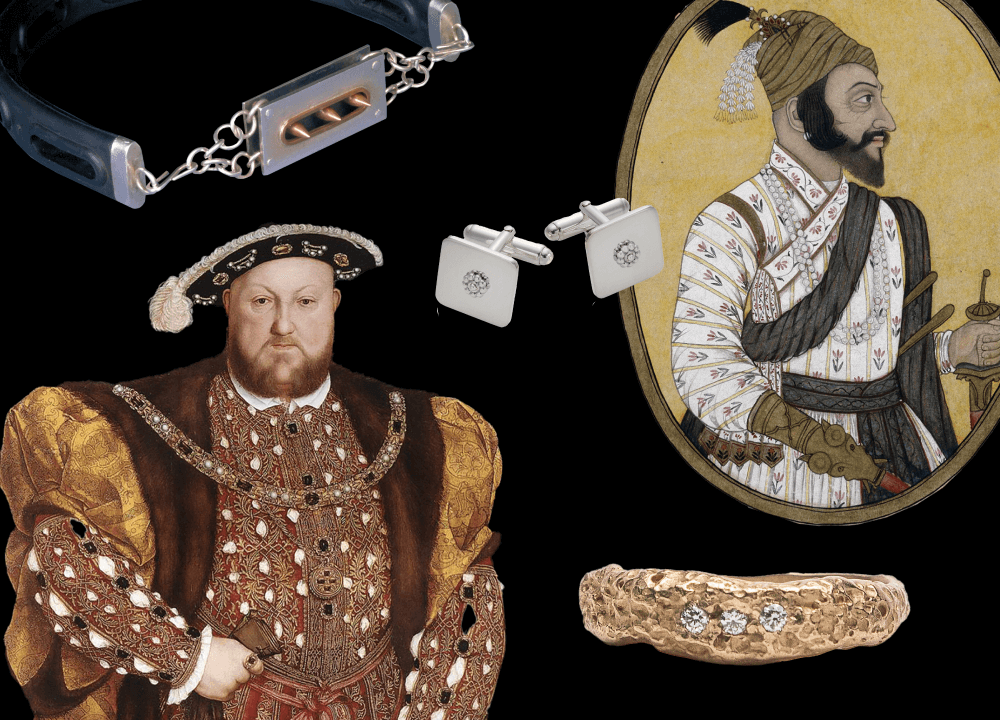
By Cynthia Unninayar
Jewellery for men is not new, far from it. Looking back tens of thousands of years, jewellery worn by men was often fashioned from teeth, claws and seashells, and was thought to confer magical powers upon the wearer. Around 6000 years ago, artisans began using gold, silver and copper with gemstones and glass in male adornment.
In ancient Rome, Mesoamerica and Mesopotamia, jewellery had social and religious significance, while in ancient China, men wore jewellery to show status and wealth. Some of the most elaborate jewels—extravagant collars, bracelets, earrings and rings—were worn by early Egyptian men as symbols of wealth and to protect them in the afterlife.
In the Middle Ages, noblemen and royalty across Europe and India proudly adorned themselves with gem-studded necklaces, signet rings and pearl strands worn over opulent clothing, all statements of wealth and status. In the Renaissance and Baroque eras, male jewellery became especially popular and expanded to include cufflinks, tie pins, brooches, waistcoat buttons, pocket watches and chains.
During the latter part of the 19th and early 20th centuries, men’s jewellery declined in popularity, with most considered un-masculine. Pieces were generally limited to cufflinks, signet rings and watches. In the later part of the 20th century, however, while jewellery was still treated as a primarily feminine element, men increasingly began using jewellery as fashion statements.
This theme was more apparent in the relationship between Hip hop and jewellery, starting in the late 1970s. Massive gold chains, rings, and earrings with high price tags became an almost symbiotic part of this movement. Hip hop and bling later became synonymous with rappers and expensive jewellery that favoured mostly gold and diamonds. As Rap mostly talks about overcoming life’s difficulties, jewellery symbolises escaping these struggles.
Today, men’s jewellery is more diverse than ever. This increasing popularity is due to current movements related to gender fluidity and identity, which have led many designers to come up with unisex collections. This new trend is more about breaking down barriers rather than creating a new style, as these pieces appeal to both men and women. Coming in an almost limitless variety of designs, unisex and men’s jewellery features a wide variety of materials including gold, platinum, silver, titanium, silicone, colourful gemstones, diamonds, and more.
Men’s wristwatches have also evolved. They gained prominence in the 1880s when they were created for German naval officers, followed by the 1904 Cartier’s Santos watch crafted for Brazilian aviator Alberto Santos-Dumont. Following World War I, during which they were an important part of an officer’s kit, the watch industry boomed with new inventions and elements, especially the automatic watch, created in 1923. During the second half of the 20th century, the types of wristwatches expanded greatly, and they increasingly became status symbols in their own right, a phenomenon that continues today.
Another major disrupter in the time-space occurred in the 1970s with the arrival of the quartz movement, which ultimately led to the smartwatch sector. Today, on the mechanical side, tech innovations abound with new complications, materials, sizes, shapes and colours. Watch brands are also partnering with entertainment celebrities, sports personalities and activities, as well as global events in successful marketing initiatives. Regardless of the type, colour or style, men’s jewellery, including timepieces, is still all about making a statement.

Men have worn jewellery for hundreds, even thousands, of years. This portrait of Henry VIII (1491-1547), painted in 1540 by Hans Holbein, shows the monarch adorned with a gem-set necklace, rings and gemstones glimmering like buttons on his ornate outfit. (Photo: Wikimedia Commons, Public Domain)

Men’s jewellery currently includes almost every type of adornment such as chains, pendants, rings, belt buckles, earrings, bracelets and watches, designed specifically for men or in unisex styles. (Photo: Dieter Blom, Unsplash)
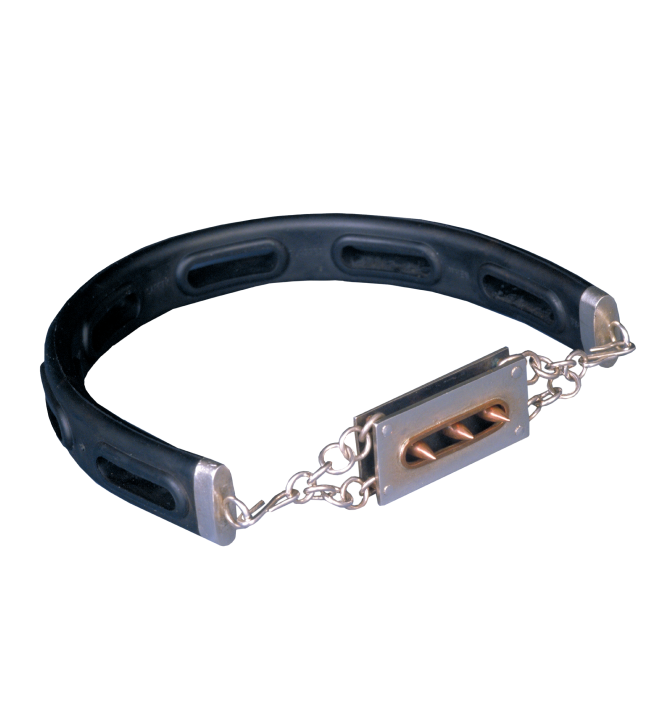
Future Artifact: Spiked Collar made of repurposed rubber, recycled sterling silver and recycled copper by Christine Dhein.
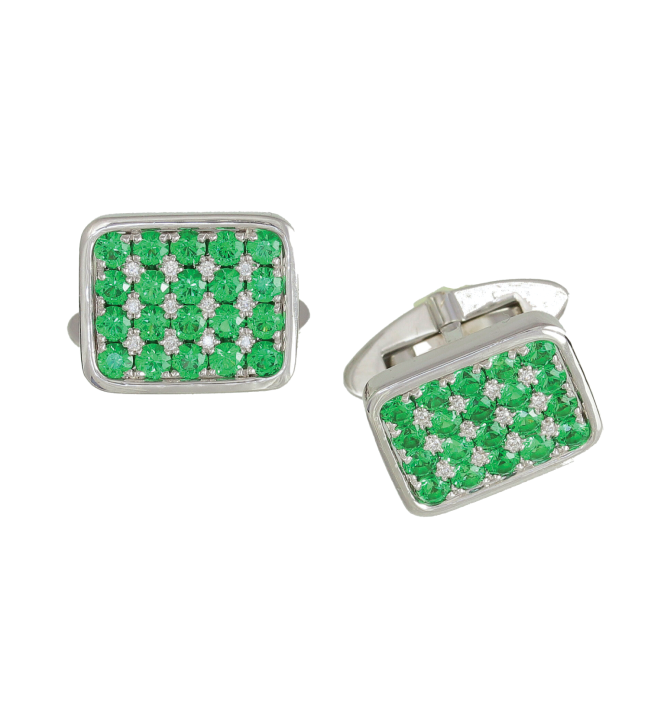
Cufflinks in 18K white gold featuring tsavorite and diamonds by Frederic Sage.
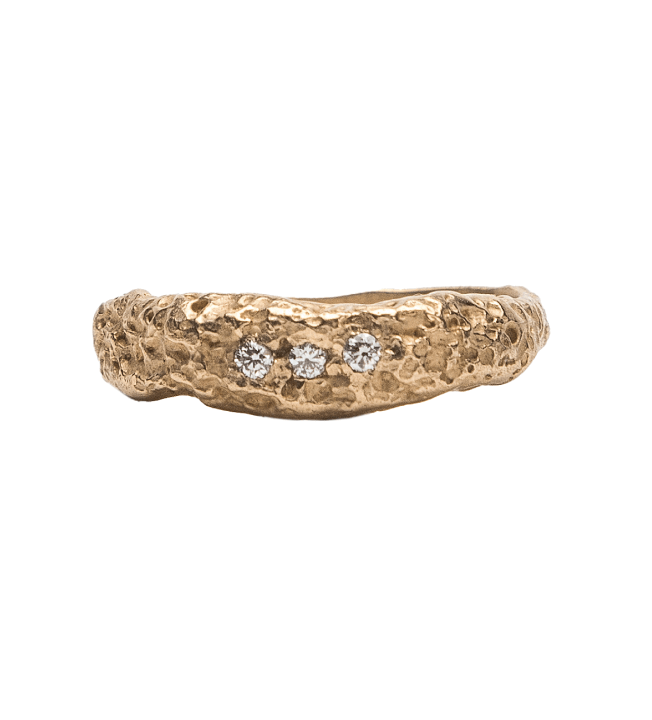
Hand-carved unisex Hyphae ring in Fairmined gold and Canadian diamonds by Jeanie Andronyk.

Round unisex skeleton signet ring crafted in rhodium-plated sterling silver, set with white sapphires, by Kathryn the Younger.
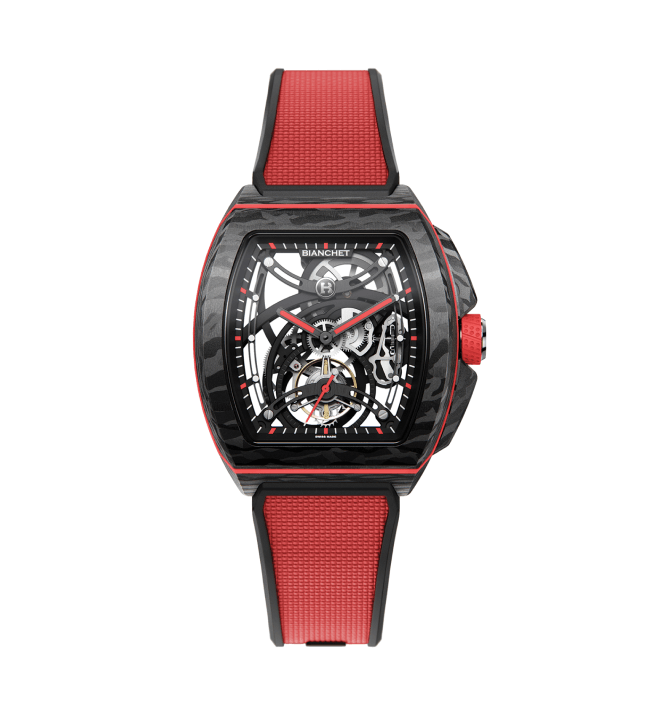
After partnering with 32-year-old Bulgarian tennis player Grigor Dimitrov, Swiss watch brand Bianchet created this Bianchet Tourbillon B1.618 Openwork Carbon timepiece in his honour.
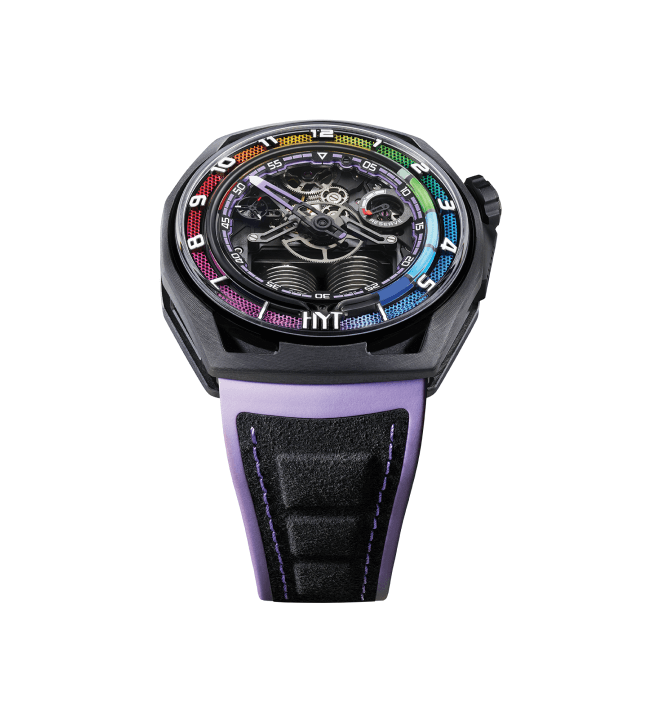
Timely colours are featured in this HYT Hastroid Rainbow Cobra timepiece, one of 15 watches in HYT’s new limited Hastroid Rainbow collection, featuring carbon fibre, DLC-coated titanium, and a special lacquer technique for colouring the dial.
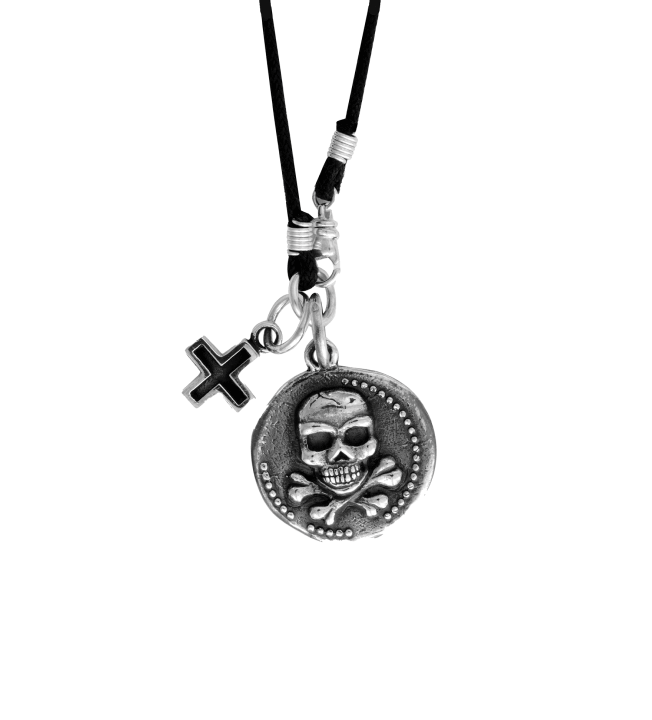
Pendants in sterling silver with skull and cross motifs by King Baby.
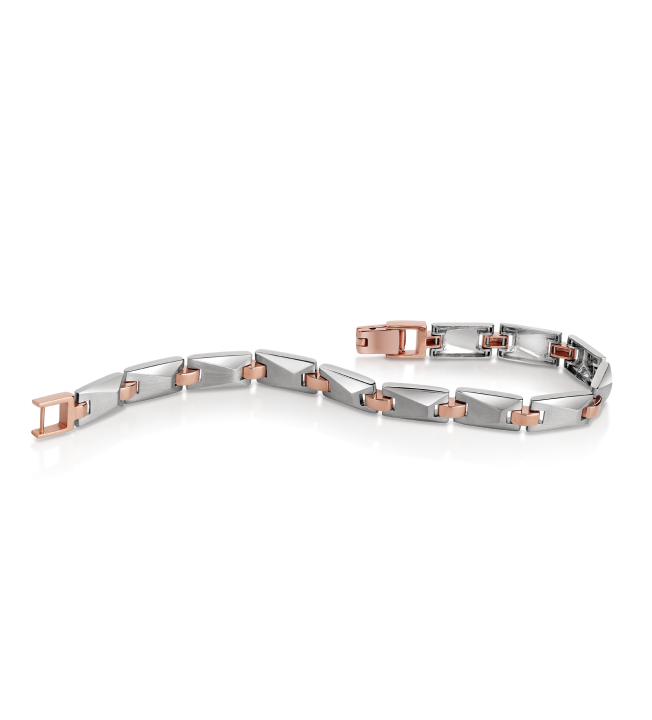
Platinum and pink gold bracelet by Men of Platinum.
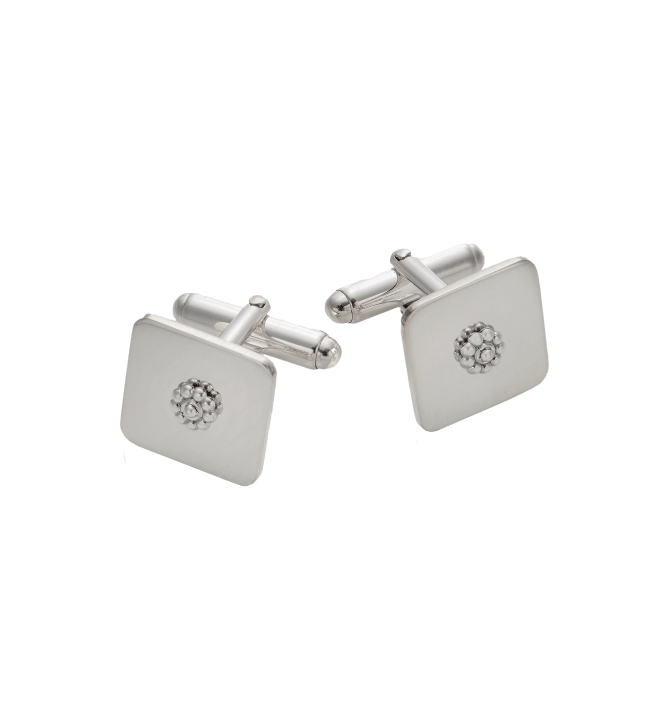
Rosette cufflinks, inspired by the rosette motifs painted by the early Renaissance painter Fra Angelico, crafted in sterling silver by Christina Malle. (Photo: Ralph Gabriner)
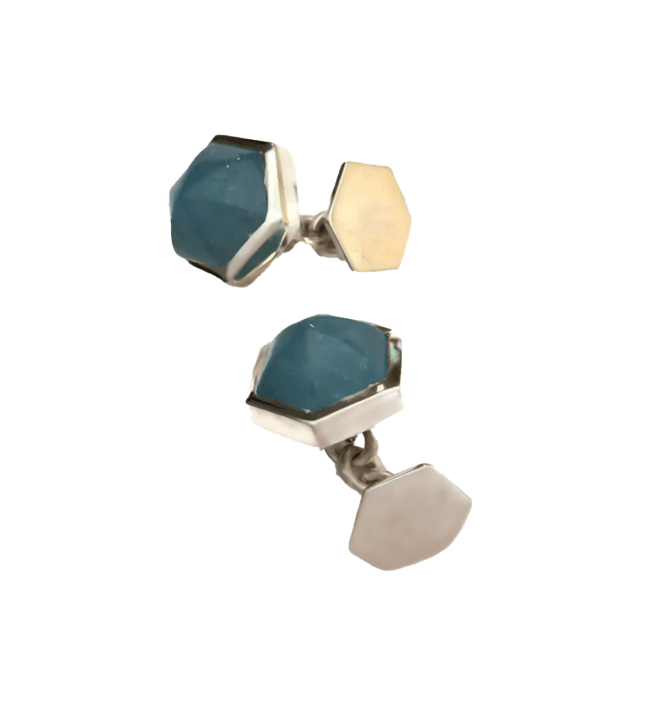
Colourful cufflinks in sterling silver and aquamarine by Saskia Shutt Designs.
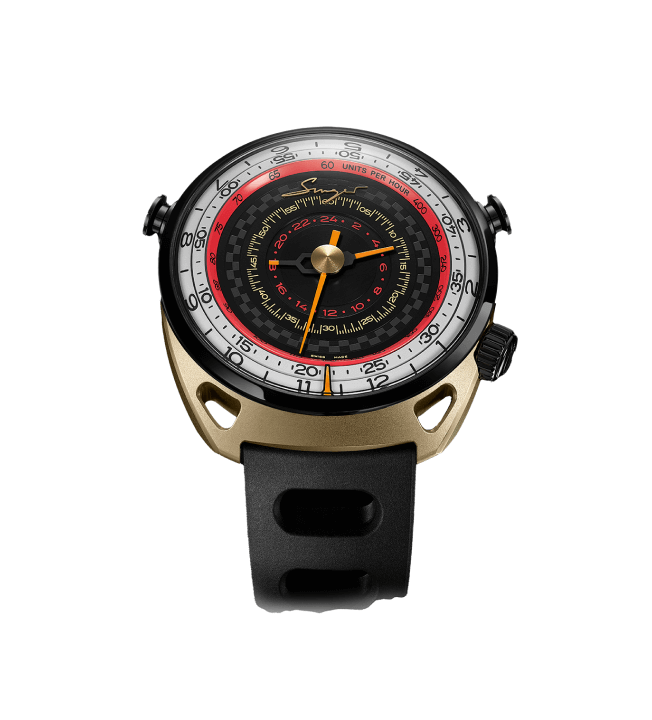
Singer Reimagined is the official watch partner for Hertz Team JOTA. Its Cobra timepiece, featuring a 24-hour chronograph, is part of the brand’s limited-edition collection, celebrating the 100th edition of the 24 hours of the Le Mans motor race.
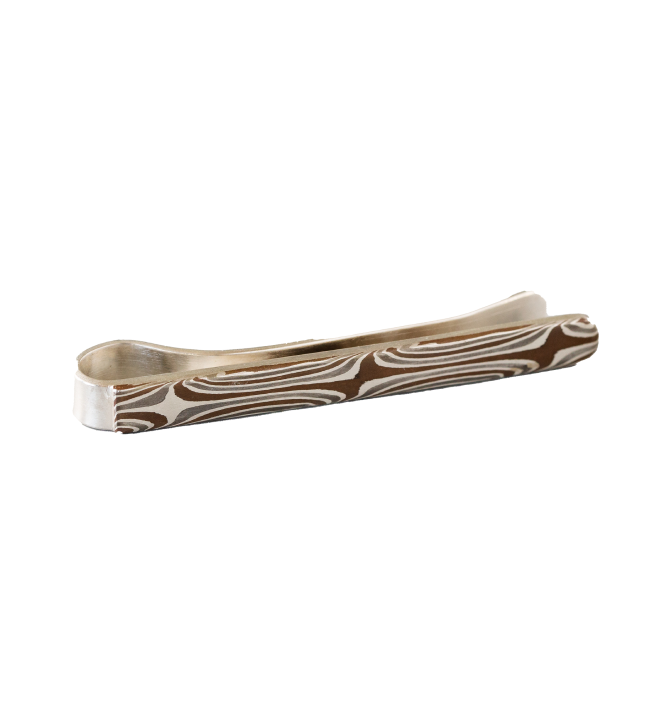
A tie bar made in the traditional Japanese Mokume Gane technique, utilising 25 layers of gold and silver to create a woodgrain pattern by W.R. Metalarts.
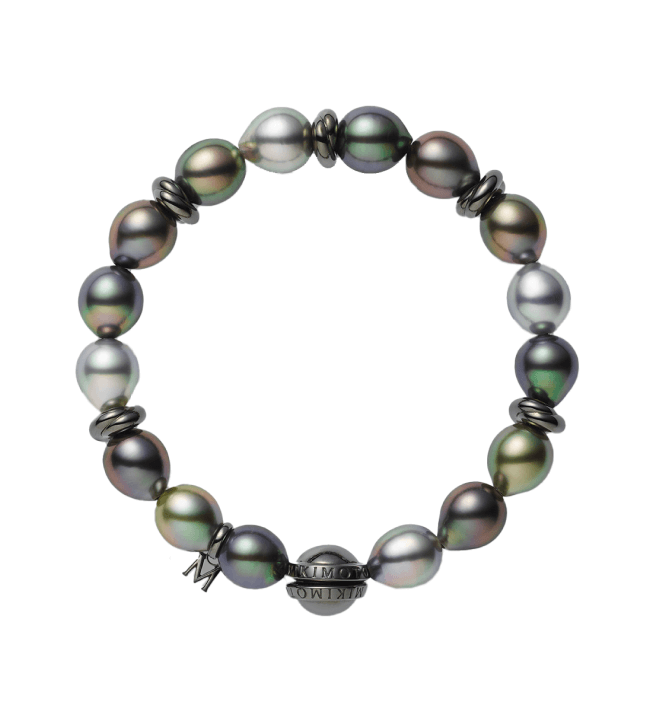
Pearls are again a favourite when it comes to men’s adornment as seen in this Tahitian pearl bracelet in Mikimoto’s men’s line.

Pocket watches, with their chains, have been a form of male adornment for centuries. Shown here is an elaborate French-made antique enamelled pocket watch, from the late 1800s, featuring champlevé enamel in the style of Falize. (Photo: Lang Antiques)
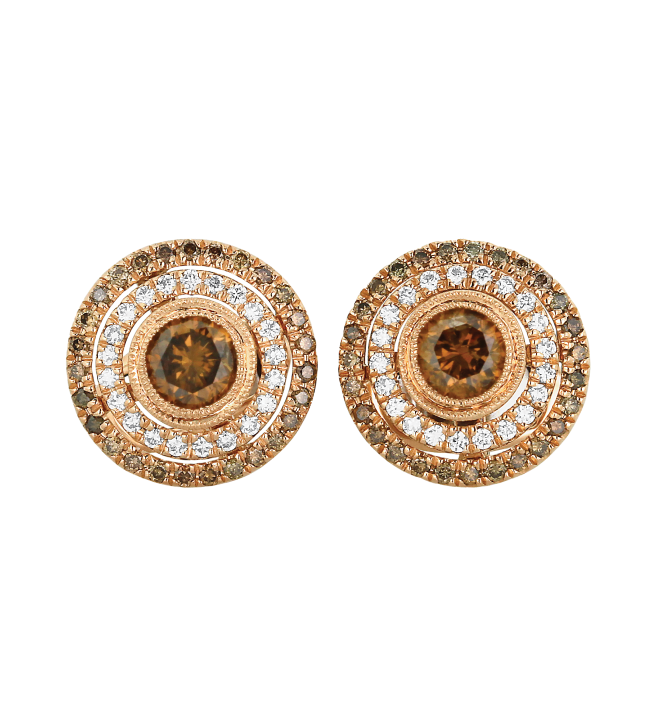
Contemporary cufflinks in 18K rose gold, brown and white diamonds by Yael Designs.
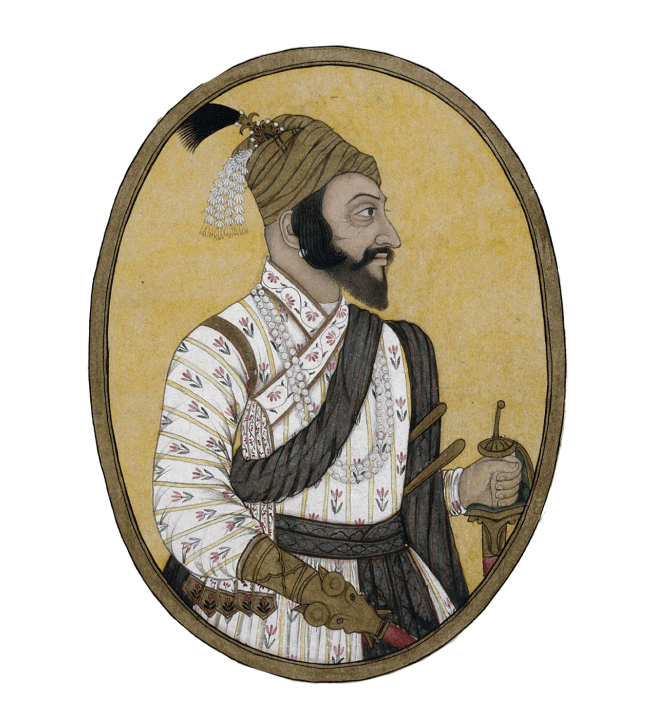
Pearls have adorned men for centuries. Shown here wearing strands of pearls and pearl earrings is Chhatrapati Shivaji, founder of the Maratha Empire in India (1680-1687), in the British Museum. (Photo: Wikimedia Commons, Public Domain)
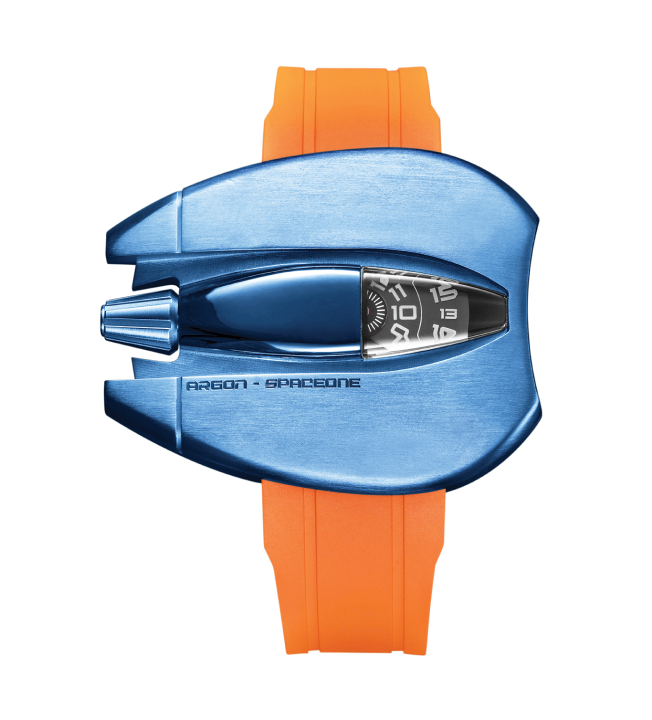
Watches continue to evolve with colours and innovative designs, as seen in Argon’s Spaceone, featuring a titanium dial, jumping hour and digital display.
All images are courtesy of the brand/designer mentioned unless otherwise specified
Further reading: